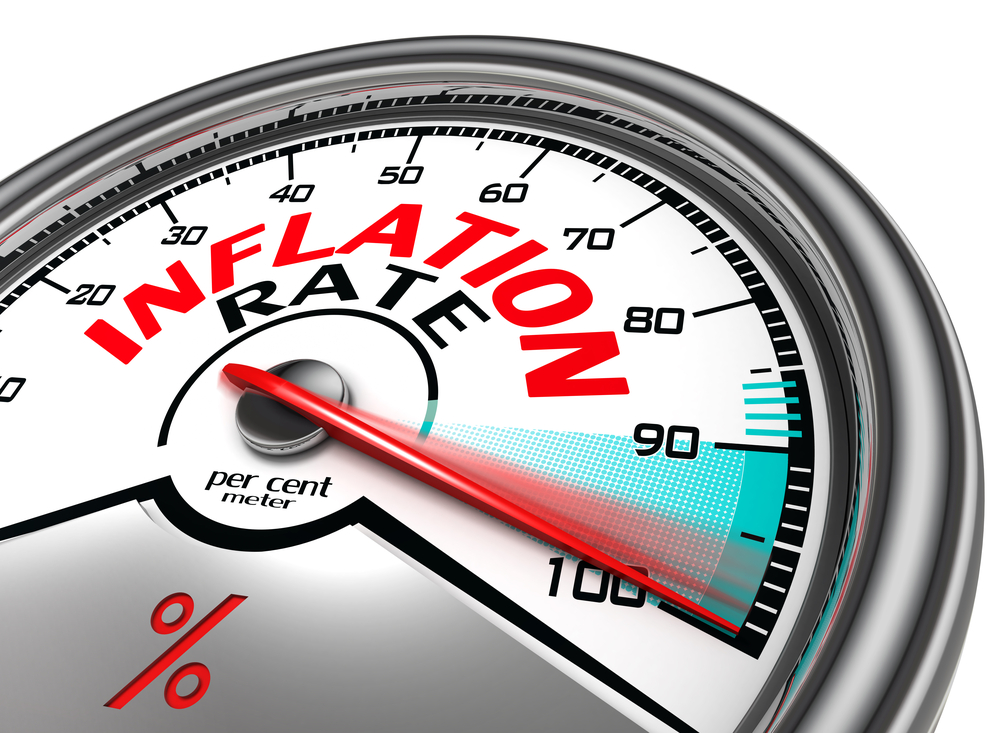Economists, policymakers and, of course, people seek answers to two questions related to inflation.
The first is how the government was successful in taming and stabilizing inflation in the range of 14-16% during the two years since President Hassan Rouhani took office, and the second is whether the government will be able to fulfill its promise to pull it further down to under 10%.
To answer these questions, wrote a member of Monetary and Banking Research Institute affiliated with the Central Bank of Iran, Hamid Zamanzadeh, in the Persian weekly Tejarat-e Farda, one should keep track of known factors affecting the inflation rate in Iran.
A point-to-point inflation of 45% was handed to Rouhani in June 2013 by former president Mahmoud Ahmadinejad. In a four-month period after the presidential election, by lowering the inflation to below 40% in September 2013, Rouhani proved he had put in all efforts to win the battle against alarming price indices; even before his top warrior, Minister of Economic Affairs and Finance Ali Tayyebnia joined the Cabinet.
After one year, the government was able to cut inflation to half. An inflation of lower than 20% was registered for September 2014. The rate kept falling down to around 15% in March 2015 and from that point on it has been holding steady.
Foreign Exchange Rates
A brief look at the last two years’ foreign exchange rates shows that the rial has not lost considerably against the main international currencies such as the dollar, euro and pound. The government, using its arm in charge of monetary policies, CBI, managed to achieve a minimum range of fluctuations in exchange rates which, according to many researches, is one of the main factors contributing to inflation reduction.
Stable exchange rates helped ease the inflation through three pathways. First by stabilizing the prices of imported commodities. Considering imports account for a sizable portion of commodities involved in the consumer price index, unwavering exchange rate means steady price index and thus lower inflation.
On the other hand, since prices of imported capital goods and intermediate goods are included in calculating domestic manufacturing costs, a steady rial against the dollar helps stabilize the cost of domestic products, consequently pulling down the inflation.
Furthermore, foreign exchange rate fluctuations are one of the main factors forming inflationary expectations in Iran, which in turn have a short-term influence on inflation. Soon after the exchange rates went through a steady phase two years ago, they pulled the inflation rate down by reducing inflationary expectations. Low range of fluctuations in exchange rates, hence low inflationary expectations, still play a major role in stabilizing the inflation.
Liquidity
Liquidity growth rate is the most important factor exerting medium- and long-term effect on the inflation rate. Both phenomena work in a correlated fashion; nonetheless, changes in liquidity growth rate influence the inflation rate with a time lag, which according to studies equals one year in Iran.
In March 2014, the beginning of last Iranian year, the economy posted a liquidity growth rate of around 25.3%, showing a decrease from the 30% registered a year before. The number further shrank to 22.3% in March 2015 showing a slow and gradual pace in contraction of liquidity.
The slide in the size and rate of liquidity during the aforementioned period was reflected in the stabilized inflation as of December 2014 (see graph).
Subsidy Reforms
The Subsidy Reform Plan, a policy introduced during Ahmadinejad’s administration and passed by the parliament on January 2010, had a huge impact on inflation rate.
The announced objective of the plan, which has so far been implemented in three phases, was to replace subsidies on food and energy (about 80% of total subsidies) with targeted social assistance, in accordance with the five-year economic development plans, and move towards free market prices in a five-year period.
Many experts believe the record-high 45% inflation in June 2013 was an outcome of the implementation of the first phase of the plan, which in essence leads to a hike in energy prices on the one hand and an increase in liquidity, resulting from monthly cash payments, on the other.
The implementation of the second phase of the plan in April 2014 was anticipated by many experts to put an end to the downward trend in inflation rate. Those forecasts, however, proved false as the execution of second phase only inhibited the falling rate of inflation minimally.
Moreover, the government managed to carry out the third phase of the plan more successfully as the reforms’ effect on the downward inflation was further lessened.
The Outlook
The future of inflation rate will depend on how the factors affecting the inflation rate will change in the next two years of President Rouhani’s administration.
Since the implementation of the third phase of subsidy reforms does not seem to have had any further effect on inflation, the rate is dependent on other variables the government will strive to take under control, i.e. foreign exchange rates and liquidity growth rate.
In the short run, exchange rates are the main contributor to the inflation. Sanctions-relief expected as part of the July-14 nuclear deal between Iran and the world powers lays the foundation for another two years of rial not losing to international currencies. Although the steady rial will guarantee no inflation rise resulting from fluctuating exchange rates, it will not do enough to fulfill the Rouhani’s below-10-percent promise.
On the other hand, the fall in liquidity growth rate is not yet sharp enough to slow the inflation rate down to below 10% in the long run. The government will have to reduce the 22.3% rate of liquidity growth registered at the beginning of the current Iranian year (March 2015) to around 15% by yearend to see the needed effects on inflation in the next two years.


